
Pipeline goes to waste as Dzil Libei residents need water
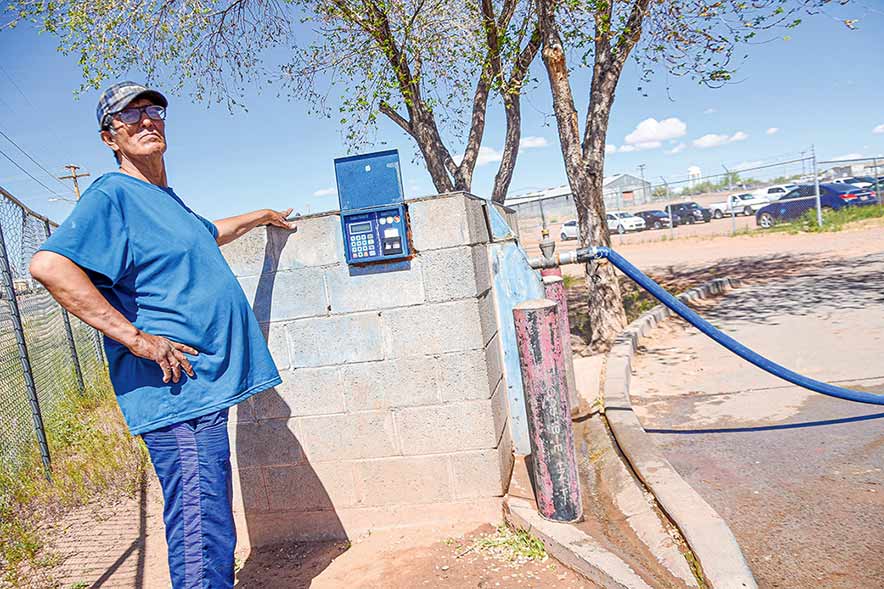
Special to the Times | Krista Allen
Robert Manygoats from Łigai Dah’azką́, near Tonalea-Red Lake, Ariz., waits at NTUA’s watering point in the Tuba City District, where he and his family fill their water 275-gallon tote tank.
By Krista Allen
Special to the Times
DZIŁ ŁIBÉÍ, NA’NÍ’Á HASÁNÍ, AND TÓNANEESDIZÍ, Ariz.
The defunct Black Mesa coal slurry pipeline runs through Andy Manychildren’s front yard in Dził Łibéí, where residents say it could easily be converted into a water pipeline.
The 273-mile, 18-inch diameter coal slurry pipeline – owned by Tulsa, Oklahoma-based ONEOK – once moved five million tons of coal dust mixed with water annually from Black Mesa Mine on Dziłyíjiin to the Mohave Power Station in Laughlin, Nevada. The power station was shut down in 2005.
The well that supplied water for the slurry line used to be the main source of water for families in the area, said Manychildren, who lives at the base of the mountain with his family.
“This could easily be converted into a water line,” he said.
The pipeline system is divided into four sections that each corresponds to a pump station. Manychildren said one of those pump stations is located near the Thriftway store where there’s a well, which supposedly was given to the Navajo Nation when the coal mine shut down.
“But the tribe’s not doing anything with it so the (pump station) is sitting there,” Manychildren said. “That’s our situation out here.”
However, Manychildren and his family were told this suggestion is not economically feasible.
“But they could easily use that (pipeline) to run another plastic line right through the middle,” Manychildren continued. “I don’t know what the tribe is doing about that.”
He said when President Jonathan Nez was the vice president, Nez visited with residents at Mary Begay’s house where water pipelines and other community needs were discussed.
As a public service, the Navajo Times is making all coverage of the coronavirus pandemic fully available on its website. Please support the Times by subscribing.
How to protect yourself and others.
Why masks work. Which masks are best.
Resources for coronavirus assistance
Nez, residents here say, has not taken care of any of the issues, including running a water pipeline to residential homes.
Nez’s spokesman, Jared Touchin, said there are several reasons why the former slurry pipeline hasn’t been reclaimed.
For one thing, he said, the water from the well contains uranium and other heavy metals and would have to be treated before it would be potable. For another, the pipeline crosses the Hopi reservation so a right-of-way agreement would have to be negotiated.
As a short-term fix, windmills in the area have been repaired but they are repeatedly vandalized, he said.
The burden of thirst
The task of fetching water defines this part of Western Navajo.
More than 190 mustangs died around a small, dried-up pond amid a cracked desert ground in April 2018 after a widespread drought hit the area.
Then-president Russell Begaye said at the time the tragic incident exemplified the problem the Nation faces with the overpopulation of feral horses.
Cameron Chapter President Milton Tso said on that occasion the earth dam became muddy and horses and cows got stuck in the mud and they died.
Dozens of horses died that month, said Manychildren.
“There are still a lot more out here that go to these houses and people just haul water for them,” he said. “We do the same here too. Right now, we’re getting water every now and then. A lot of them (horses) came by (recently). In a month or so, it’s going to be bone-dry again. There’s just no water.”
Manychildren said every family living near Dził Łibéí has to haul water while some families living near U.S. Route 89 and in other Diné communities have the luxury of turning on a faucet.
“We’ve got no running water out here,” Manychildren said. “We’ve got to either go to Flagstaff or to Tuba City to buy it. They’re about the same (distance) both ways. The closest place we go for water is Cameron, but that’s not real good water. It’s (not clear). And we still got to pay for that too. And we have to pay round trip to haul water, and it takes a toll on our vehicles.”
Manychildren said there is a Navajo Tribal Utility Authority water station with a water pressure problem in the small community of Dził Łibéí. It takes nearly an hour to fill a 50-gallon water barrel, he said.
“The officials in Window Rock, they probably think they know about the problem out here, but I don’t know what is taking so long for the dire need of water out here,” Pearl said. “There’s no windmill – nothing out here. There’s nothing!”
Pearl said there are at least four water storage tanks in Dził Łibéí, but they are all dry.
“The Navajo Nation, the U.S. needs to hear what’s going on out here because I feel that some parts of the Navajo Nation are severely neglected like here in Gray Mountain,” Pearl said in frustration.
“I’m not talking about Cameron,” she said. “I’m talking about only Gray Mountain. It’s severely neglected by our tribe. We have sheepherders out here! We have ranchers out here! We have elders out here!”
Many of the residents here have been meeting for years at Mary Begay’s residence to talk about issues like water and residents have turned to Coconino County District 4 Supervisor Jim Parks for help.
“And nothing happened because we kept getting referred to the Navajo Tribe,” Pearl said. “At least one windmill would really help out here. It’s just so frustrating! This isn’t a 2-year-old problem, this has been a problem for over 20 years here in Gray Mountain. It’s not a secret. We’re in dire need here.”
Coronavirus outbreak
When the World Health Organization declared a pandemic, 84-year-old Mary Begay said she knew what to do: keep apart from others and consume traditional herbs.
“When my mother and my grandparents were alive, they used to say, ‘A flu-like virus has arrived’ when an unknown flu epidemic occurred,” Begay said in an interview in Navajo. “Our medicine people knew of epidemics and pandemics by the sun, the moonlight, and the sunset.
“They would say, ‘This is what the clouds are doing, this is a sign of a flu epidemic or a global pandemic. So, take care of yourselves.’ This was during a time when our population was small,” she said. “There were only a few of us Diné and we looked after one another.”
Begay lives alone with her daughter, Linda, near the Babbitt Ranches with a panoramic view of Dook’o’oosłííd.
Begay said when her daughter explained to her what the coronavirus is and that it surfaced in a Chinese seafood and poultry market late last year, she was already prepared with her herbs she had gathered during trips to get firewood.
The herbs she and Linda consume are concentrated and she boils them to drink the extract. The herbs that she uses are ts’ah, awééts’áál, gad, and chilłibáhí, each of which is pulverized and mixed with a small amount of chá’oł.
“We have separate containers – one for consuming and one for handwashing,” Begay said. “Our elders who have gone before us taught us this, saying this is medicine for the future.”
Also, making a nábįįh or a chilahwéhí hot drink and burning tree sap in the woodburning stove.
“It was said viruses are scared of it and taking a steam bath in a (táchééh),” she added. “That’s how I grew up. Now, we’re told about social distancing and abstaining from visiting one another. My daughter and I don’t travel, and we avoid close contact from people.”
Begay said these traditional lessons are vital for disease prevention and the ripple effect can help save lives, especially along with washing hands with soap for at least 20 seconds.
“We use regular soap bars and we also have a bowl of warm water to wash up,” she explained. “We change the water immediately after washing up. We don’t use the same water. We don’t bathe in the same water too. We also use the medicine to wash up as well.”
Begay said the pot of medicine is always on the stove. And she changes the water at least every three days.
2 million with no running water
At least two million Americans still don’t have running water or a working toilet at home, according to Dig Deep’s Navajo Water Project, which reported that about 30 percent of Diné don’t have a tap or toilet at home.
That’s an estimated 16,000 households without running water, said Deenise Becenti, spokesperson for NTUA.
“We have four watering stations – Tuba City, Kayenta, Dilkon, and Shiprock district offices,” Becenti said. “These stations were set up as a courtesy to the region because we knew there (is) lack of watering points.
“It was brought to our attention that the chapter watering points were closed because the Navajo Nation shut down which led to people having to drive to one of our watering points for water,” she said.
Sixteen of the 20 chapter watering points are now operating, according to NTUA.
“This one of the reasons why we are keeping our district offices open because people want to haul water and they would have to charge the key cards,” Becenti added. “The cost is five dollars for up to 1,000 gallons of potable water. In comparison, a gallon of water in a store would cost close to $2 – that’s for one gallon.”
Fetching water, though, is a lot of work, said Begay. And when a person spends hours hauling water long distances, one measures every drop.
“Sometimes there’s no fuel for our vehicle and when we get some fuel, that’s when we travel to get water again,” Begay said. “We get our drinking water from Tuba City.
“Other times we pay for it and water gets delivered to us by a truck from Tuba City,” she said. “We pay between $50 to $60 for a delivery, which fills up about seven 50-gallon barrels and one 100-gallon tank. When the water barrels are full, they last long.”
More water
Charlie Smith and his siblings are constantly hauling water throughout the year – rain or shine – because they not only need water for drinking and hygiene, they also need it for their cattle and horses.
“There’s about maybe three water holes left right now,” he said as he did his morning chores at his ranch in Dził Łibéí. “Three dams and that’s the main thing that our cattle are using.”
When Smith leaves his ranch for water, the dirt roads that he travels on are rough, putting wear and tear on his ranch truck, which isn’t good for his budget of about $4,000 per year between him and his two siblings.
“We’re probably spending about $10,000 for hay and then you add the water cost to it,” Smith explained. “And the nearest place to go is Cameron, which is 12 miles away. Round trip, it’s about 30 miles, including seven miles of dirt road to the Gray Mountain Trading Post. Of course, we live in a place that has no running water.”
The year seems to have just started but Smith’s ranch truck has already been serviced a few times, totaling about $3,200 for vehicle repairs by the end of April.
“We’ve got no running water,” Smith said. “We’ve got no electricity whatsoever. I’m hearing talks about extending the water pipeline up to three miles short of us – that’s it! And then the roads are pretty rocky. You have to drive slow just hauling water.”
As the coronavirus continues to spread worldwide, Smith said he and his siblings are aware of the pandemic.
“We have bleach, we have all the necessary equipment here at the hogan,” Smith said. “And we practice that. It’s tough with having to conserve water, but each time you do something – go to the outhouse or be around cattle or at the horse corral, you’re constantly washing your hands.”
Smith said he and his siblings are using about five to 10 gallons of water per day. Much of it is used for cooking and consuming and some of it is for dishwashing and hand washing.
Smith hauls 500 gallons of water each trip. This number will double to twice a day, every other day during the hot summer months.
“It’s tough for us out here because the toilet paper and the paper towels are a necessity out here,” he added. “We’re fortunate we kind of stocked up on those things but toilet paper’s starting to be a problem now.
“Food’s another issue too,” he said. “You have to stock up – you have to. We use a lot of paper products and paper plates … to adjust to the water usage.”
Smith said to save water, they buy paper products and utensils that can be thrown away or burned.
Navajo Water Project
Water is a big issue, especially during the coronavirus pandemic, said Emma Robbins, director of Los Angeles-based Dig Deep’s Navajo Water Project.
She has three observations: One, it’s not about running water, it’s also about keeping the public safe; two, there are limited hours to fill water barrels and tanks at watering points; and three, not having enough water to stay healthy leads to mental and emotional stress.
“And that can really wear you down,” said Robbins, who’s originally from Cameron, Arizona, but resides in Los Angeles, where she is working around the clock to help coordinate water deliveries from California to the Navajo Nation.
“And, yes, you can use bottled water to wash your hands,” she said. “If you’re going to do that for 20 seconds, you’re using a lot of water.”
Dig Deep has always been a long-term access project, but in response to the COVID-19 outbreak, the Navajo Water Project is keeping the clean water flowing.
The Navajo Water Project has partnered with hydration company Nestlé Waters to distribute 248,000 gallons of bottled water to 30,000 people across Arizona, New Mexico, and Utah through a massive network of local partners. That’s nearly two million pounds of water.
Nestlé delivered a total of 71,280 gallons of water – 330 pallets – with 15 semi-trailers to the Western Navajo Fairgrounds last month.
The company also delivered 42,768 gallons (198 pallets with 9 semi-trailers) to New Mexico and 9,504 gallons (44 pallets with 2 semi-trailers) to Red Mesa, Utah.
“And I think for sure it’s been difficult to see it in mainstream media because it’s like, ‘Really? It takes a global pandemic for people living in this country to realize what a big deal that is to not have water?’” Robbins said.
“And that to me is really surprising because it’s not just about not having water, it’s like the systemic issue of the federal government not honoring the treaties and not being there to help us when there’s that agreement,” she said.
Robbins said it’s been hard living outside the four sacred mountains and she wants to go home to help in person. But because of the virus, the best way she can help is by calling people and asking for donations or by sitting behind her computer and working out the logistics.
Robbins said the Navajo Water Project is gearing up for round two, during which an extra 124,000 gallons will be delivered to the Navajo Nation.
“One of the biggest tools that we as Native people have is the internet and social media because oftentimes, as we’re seeing, major news companies are coming in and reporting only on this thing (water) because it’s so shocking right now,” Robbins added. “It’s like, this is a reality for people 365 days of the year. It’s not something like, ‘Oh, all of a sudden we’re realizing that this is an issue.’”
On the other hand, said medicine man Leland Grass, president of the Diné Medicine Men Association Inc., it’s nothing the Diné can’t handle.
“We’ve been hauling water for generations,” he said.

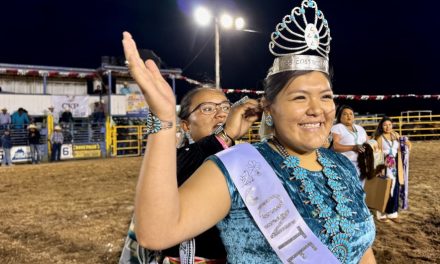
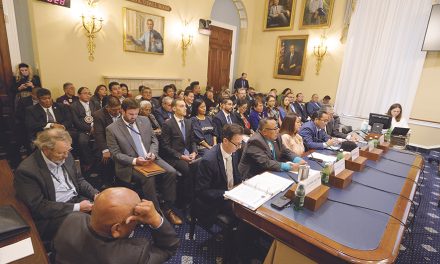



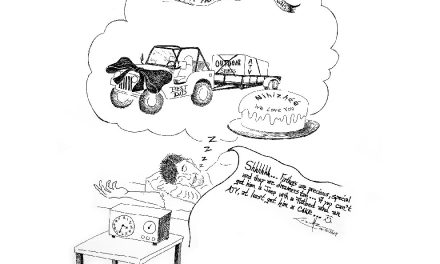

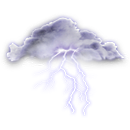
 Highway 264,
Highway 264, I-40, WB @ Winslow
I-40, WB @ Winslow